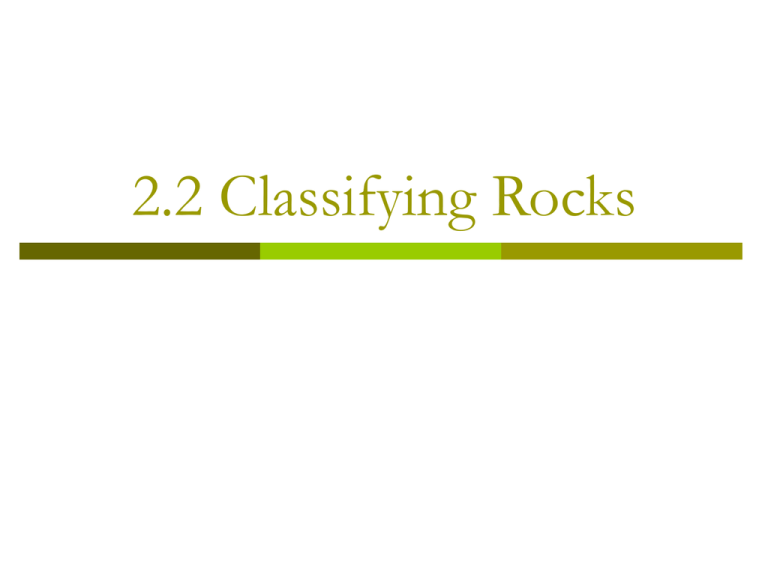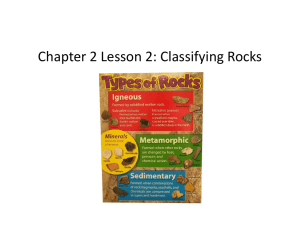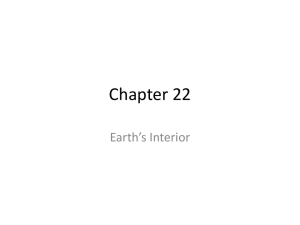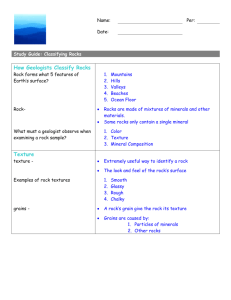2.2 Classifying Rocks
advertisement

2.2 Classifying Rocks To study a rock sample, geologist observe the rock’s mineral composition, color, and texture. Rocks are made of mixtures of minerals and other materials. Some rocks contain only one mineral. Other rocks contain several minerals. A rock’s color provides clues to the rock’s mineral composition. However, the color alone is not enough evidence to identify a rock. grains – the particles in rocks made up of minerals and other rocks texture – the look and feel of a rock’s surface To describe the texture of a rock, geologists use terms that are based on the size, shape, and pattern of the grains. 3 types of grain sizes: 1. coarse grain – rocks with grains that are large and easy to see. 2. fine grain – rocks with grains that are so small they can only be seem with a microscope 3. for example: granite, diorite for example: basalt, slate no visible grain for example: flint 2 1. types of grain shape: rounded grain – round edges 2. for example: conglomerate jagged grain – jagged or sharp edges for example: breccia 2 1. types of grain pattern: banded – grains lie in a pattern of flat layers or can form swirls or colored bands 2. for example: gneiss nonbanded – gains do not have any visible pattern for example: quartzite Using the characteristics of color, texture, and mineral composition, geologist can classify a rock according to its origin (how the rock formed). Geologist classify rocks into 3 major groups: 1. 2. 3. Igneous rock – forms from the cooling of magma or lava Sedimentary rock – small particles of rocks or the remains of plants and animals are pressed and cemented together, forming layers Metamorphic rock – rock that is changed by heat and pressure, or by chemical reactions What type of rock are these? What type of rock are these?











